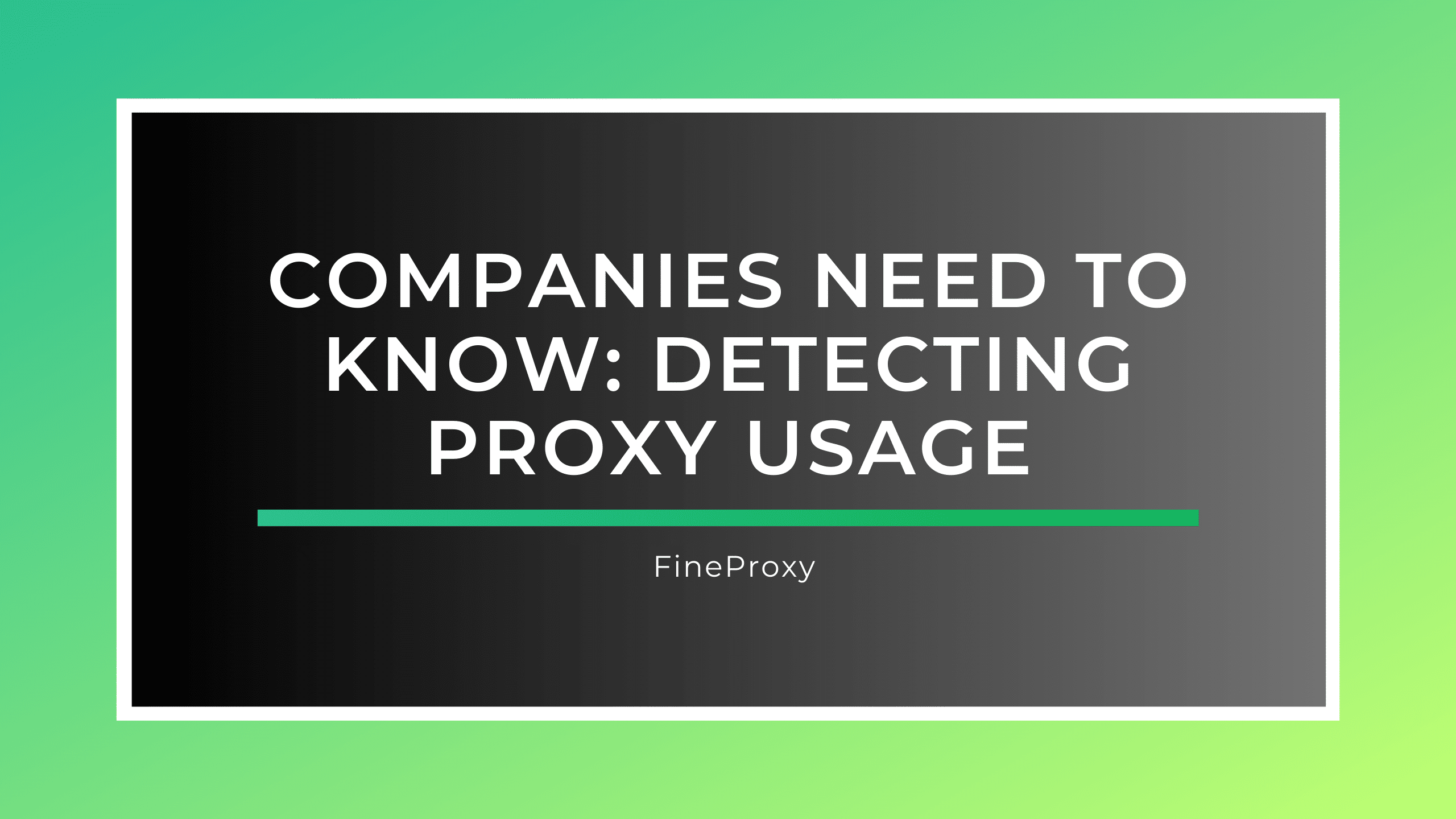
As businesses increasingly move online, understanding and managing digital traffic becomes crucial. One aspect that companies often need to address is the use of proxies by users. Proxies can hide a user’s real IP address, presenting challenges for security, content delivery, and compliance. This article explores effective methods for detecting proxy usage, offering valuable insights for businesses looking to secure their online environment.

The Importance of Proxy Detection
Proxy detection is essential for companies in various scenarios, such as preventing fraud, ensuring content is delivered to the intended audience, and enhancing security measures. By identifying proxies, businesses can better understand their traffic, reduce risks, and ensure a seamless experience for genuine users.
IP Address Analysis
Public Proxy Lists: A straightforward method is to check the user’s IP address against public proxy lists. These databases contain IP addresses identified as proxies. Although not exhaustive, this method provides a quick way to flag potential proxy users.
Multiple Connections Indicator: Observing multiple connections from the same IP address, but with differing details such as user agents, can be a red flag. It often indicates that the IP is a proxy shared by various users.
HTTP Header Scrutiny
Detecting Specific Headers: Some proxies leave traces in HTTP headers. The X-Forwarded-For and VIA headers are common indicators. However, not all proxies use these headers, and some users might manipulate them for privacy reasons.
Table 1: Common Proxy Indicative HTTP Headers
| Header | Description |
|---|---|
| X-Forwarded-For | Reveals the original IP address of the client. |
| VIA | Indicates the presence of intermediary devices. |
| X-Proxy-Connection | A non-standard but often proxy-related header. |
Advanced Detection Techniques
WebRTC Leak Testing: WebRTC technology can accidentally expose a user’s real IP address, even when using a proxy. Websites can employ JavaScript to initiate WebRTC requests, uncovering potential proxy use.
Latency Analysis: Proxies typically add latency to connections. By measuring the time delay in requests and responses, one can infer the use of a proxy, especially if the timings align with expected proxy or VPN routing delays.
Geolocation and Behavior Analysis: A mismatch between the IP address’s geolocation and the user’s browser settings (like language preferences) may suggest proxy use. TLS fingerprinting can also identify discrepancies in encryption algorithms, hinting at a proxy.
Utilizing Tools and Services

For comprehensive detection, businesses often turn to specialized tools and services that aggregate various detection methods. These services maintain up-to-date databases of known proxies, VPNs, and data center IP addresses, offering a more reliable detection rate.
Conclusion
Detecting proxy usage is a critical component of managing online traffic for businesses. By employing a combination of IP address checks, HTTP header analysis, and more sophisticated techniques like WebRTC leak testing and behavior analysis, companies can identify proxy usage effectively. While no single method guarantees 100% accuracy, a layered approach increases detection rates. As the digital landscape evolves, so too will the methods for proxy detection, requiring businesses to stay informed and adaptive in their strategies. Understanding these techniques not only helps in securing operations but also in ensuring that when businesses buy proxies for legitimate purposes, they are used effectively and safely.






Comments (0)
There are no comments here yet, you can be the first!